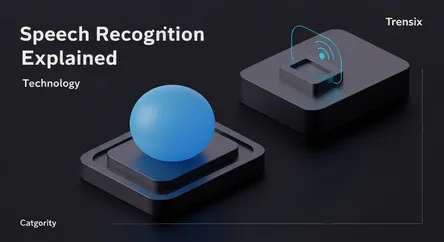Technology
Speech Recognition Explained

Discover how speech recognition technology converts spoken language into text, powering virtual assistants, dictation software, and accessible tech.
What is it?
Speech recognition, also known as Automatic Speech Recognition (ASR), is a technology that enables a computer or device to identify and convert spoken language into readable text. It's a key component of artificial intelligence that bridges the communication gap between humans and machines. By analyzing sound waves and applying complex algorithms and acoustic models, the system can decipher words and phrases. This process allows us to interact with technology using our most natural form of communication: our voice.
Why is it trending?
Advances in deep learning and neural networks have dramatically increased the accuracy and speed of speech recognition, making it more reliable than ever. This improvement has fueled its integration into mainstream consumer electronics, from smartphones and smart speakers (like Alexa and Google Assistant) to in-car entertainment systems. The growing demand for hands-free, convenient user interfaces and the rise of the Internet of Things (IoT) have made voice control a central feature in modern technology, pushing ASR to the forefront of innovation.
How does it affect people?
Speech recognition significantly impacts daily life by enhancing convenience and accessibility. It powers voice assistants that set reminders, play music, or answer questions with a simple command. For professionals, it streamlines workflows through dictation software and medical transcription services. Most importantly, it provides a vital tool for people with disabilities, offering them greater independence by allowing them to control devices and communicate digitally through voice. It's a transformative technology that is making human-computer interaction more seamless and inclusive for everyone.